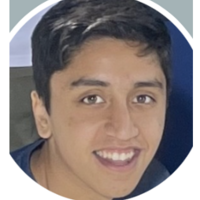Enhancing Speech Performance by Manipulating Language Network Synchronization With tACS: A Potential Treatment for Post-stroke Aphasia
This project aims to investigate whether there is any clinical use of transcranial alternating current stimulation (tACS) for treating individuals with post-stroke aphasia–a language impairment disorder that disrupts a person’s ability to produce and/or comprehend language and communicate in general. TACS is a noninvasive brain stimulation (NIBS) technique that involves running a relatively weak, sinusoidal current through electrodes placed on the scalp to entrain endogenous cortical oscillations at specific frequencies and has proven to be effective in improving certain language skills. We are applying alpha tACS on the left frontotemporal cortex (generally damaged region in post-stroke aphasia) to treat a specific spoken word production impairment called anomia, which is common amongst post-stroke individuals. Anomia is the inability to remember and retrieve the names of objects, so if treated, the overall communication skills of aphasia patients could potentially improve. Our experiment involves four tasks to test our hypothesis: Verb Generation, Blocked-Cyclic Naming, Sentence Completion, and Simple Detection (control). We predict that naming abilities will improve when active tACS is introduced to the left frontotemporal cortex compared to sham due to the enhancement of functional connectivity and reduced semantic interference effect post-stimulation. We are currently in the data collection phase, focusing on running healthy neurotypical subjects, but we eventually plan to recruit people with aphasia and use EEG to test the effectiveness of tACS/identify optimal stimulation levels for our participants.
The use of tACS, as opposed to other heavily researched NIBS techniques in the field, such as tDCS and TMS, reflects a novel approach to research in the language network. Not only is this the first study, to our knowledge, to investigate the use of tACS as a clinical treatment for post-stroke aphasia, but it may also work to measure the extent of tACS-induced network modulation and the nature of modulation in the language network.


Comments